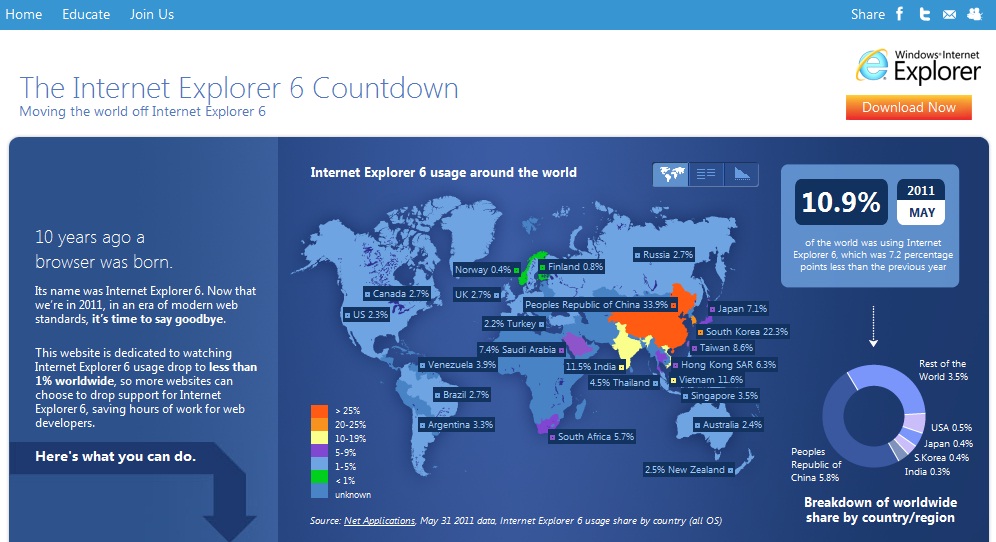Recently, people have been talking a lot about current web browsers like Chrome and Firefox 4. These software applications that we use to go through our beloved websites are getting a lot of attention. Along with this attention, there is, of course, major competition between the vendors and the creation of new, advanced features.
Of course, designers are thrilled about the current web browsers because of the fact that they are supportive of CSS3 and HTML5. They also love that they have heightened performance and ability to distribute difficult graphic animation as well as processing-intensive scripting. However, at the same time, there is a large movement to get users away from older browser versions such as IE6.

Chrome and Firefox 4 have been getting some of the market, but Internet Explorer is still the king. Even though, this is exciting for web designers and developers, does it really matter that much to the regular user?
Do they care, or even know any differences between something created by CSS3, HTML5, or JavaScript? Probably not, they only care about the content. A visitor only goes to a website to socialize or learn new things and that is all that they care about.
Even though a look of a website changes with each web browser, users should not be forced into using current ones. Web owners should not have to include on their website, what type of browser needs to be used to see their site in the best light. Every browser should be compatible.
It can’t be argued that current browsers support the most current features used with JavaScript, CSS3 and HTML5 make designing and developing more powerful. Their usage allows for creating more advanced and higher performing interface with users and contemporary designs.
Unfortunately, creating a website that is usable in only one circumstance, while easier, is impossible in most situations. What actually happens is that it is necessary to debug and design for the most delicate browser. This can mean putting off a perfect solution in order to create designs that all supported by every browser. In other circumstances designers have to decide to make delicate browsers to comply with overrides, hacks and scripts. Each of these are done for similar purposes. To be sure that the web sites functionality and main content is the same experience for all. No matter, which browser the user is currently using.

Designers need to come up with ways to create interacting, attractive sites without excluding those that have older browsers by using attributes that don’t affect the actual viewing of a website.
Thankfully, designers are in a position that is unique in that they have abilities to be in command of their own futures by advocating improved browsers and making the web browsers culpable. The fact that web browsers keep improving is great, but it is not the end at all. Designers will continually have to use their abilities and skills to provide an excellent user experience.
No related posts.
Related posts brought to you by Yet Another Related Posts Plugin.











Leave Your Response